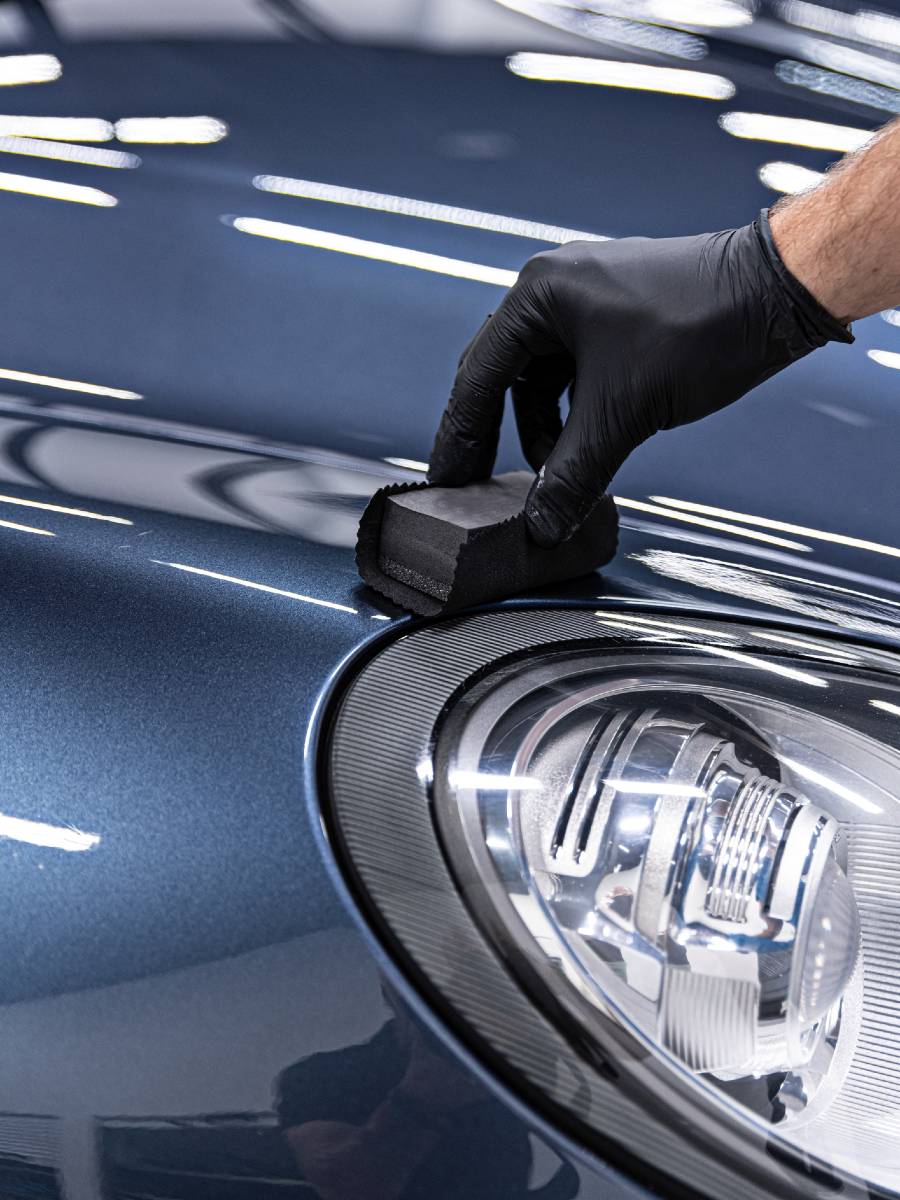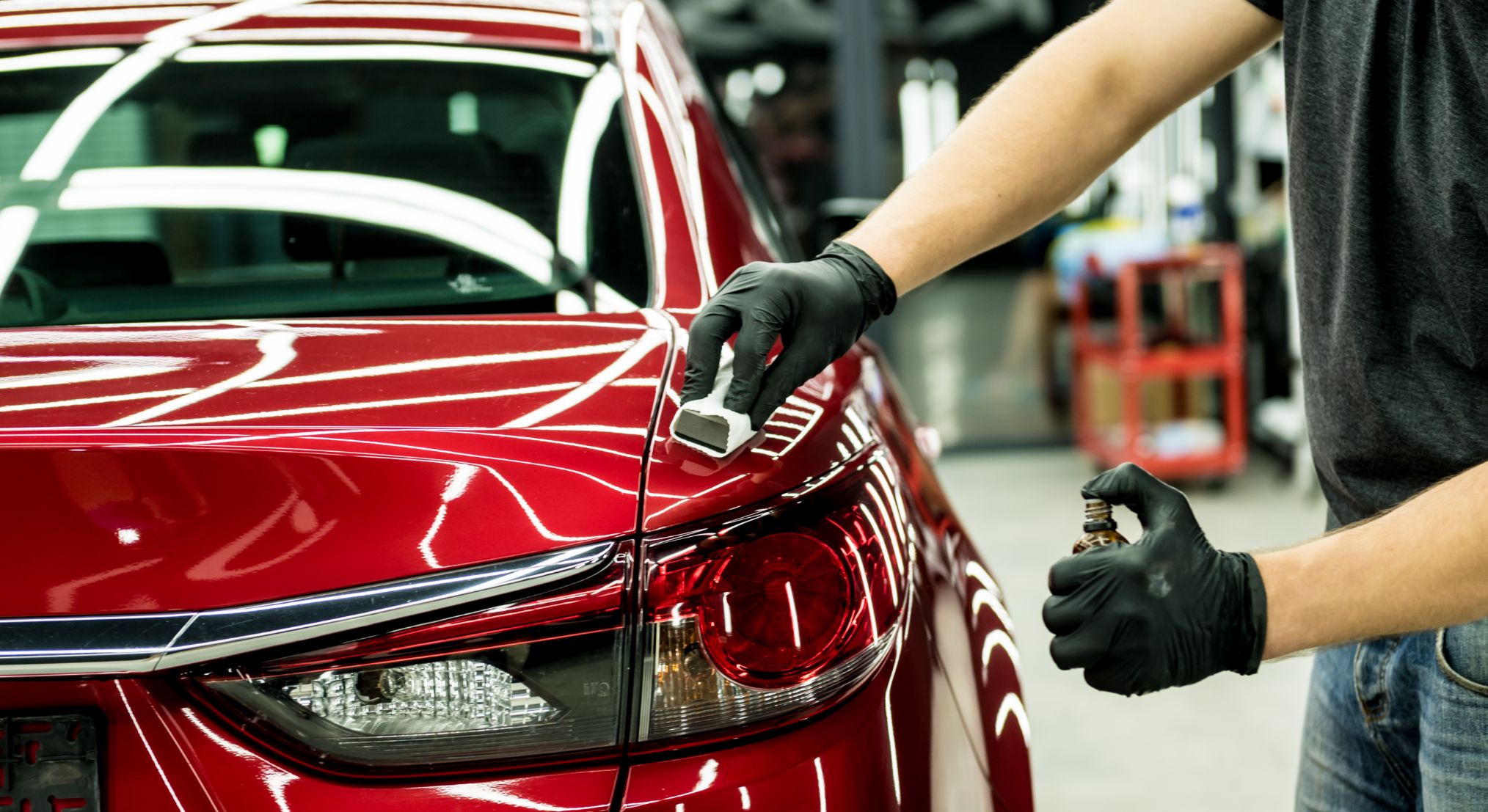Ceramic Coating vs. Conventional Wax: Which Gives Much Better Long-Term Protection?
The argument between ceramic finishings and standard wax for automobile security has actually amassed considerable interest among automotive fanatics and specialists alike. Ceramic finishes boast exceptional longevity and resistance to ecological aspects, yet the intricacy of their application elevates inquiries concerning accessibility and practicality.
Summary of Ceramic Finish
Ceramic coating has gotten substantial appeal amongst automobile lovers and detailers alike as a result of its advanced safety high qualities. This innovative modern technology is made to produce a resilient, hydrophobic guard over a lorry's paint surface area, dramatically enhancing its resistance to environmental contaminants such as dust, UV rays, and chemical spots. Unlike conventional wax, which gives a short-term layer of protection, ceramic finishes bond at a molecular degree with the paint, offering lasting durability-- commonly extending beyond two years with correct upkeep.
The application process entails precise preparation of the lorry's surface, including cleansing and brightening to make sure ideal attachment. As soon as applied, the coating cures to create a durable layer that not only adds depth and gloss to the paint however likewise streamlines upkeep. With its hydrophobic homes, ceramic finish permits water and dust to slide off more quickly, lowering the frequency of laundries and minimizing the threat of swirl marks.
Furthermore, ceramic coverings are offered in numerous formulas, allowing users to pick products tailored to their specific requirements and preferences. On the whole, ceramic finish represents a substantial development in paint security technology, delivering superior efficiency contrasted to traditional choices.
Introduction of Conventional Wax
Generally pertained to as a staple in auto treatment, wax acts as a preferred choice for those seeking a simple approach to improve and secure their lorry's paint - ceramic coating. Automotive wax typically makes up natural components, such as carnauba, or artificial substances, made to produce a safety layer on the surface area of the paint. This layer not only improves the lorry's gloss and shine but also gives an obstacle versus environmental contaminants
The application of wax is typically user-friendly, making it obtainable for both specialists and do it yourself enthusiasts. It can be applied by hand or device, enabling flexibility in the describing process. As soon as applied, wax needs a curing duration, after which it hardens to create a protective covering. Wax is also recognized for its capability to drive away water, advertising a beading impact that helps in the prevention of water places and deterioration.
However, while wax works for boosting the aesthetic charm of a lorry, it is very important to keep in mind that the protection it provides might necessitate a lot more frequent reapplication compared to different products, such as ceramic finishes. Overall, traditional wax continues to be a favored alternative for those prioritizing simplicity of use and instant aesthetic renovation.
Resilience and Durability Comparison
While both ceramic finishes and typical wax offer protective advantages for automotive paint, their sturdiness and long life differ substantially. Standard wax, normally made from all-natural carnauba or artificial polymers, usually gives a safety description layer that lasts around 3 to six months. This fairly short lifespan necessitates regular reapplication to maintain optimal security.
In contrast, ceramic layers are crafted from advanced nanotechnology, forming a covalent bond with the paint surface. This leads to a robust, hydrophobic layer that can endure for 2 to 5 years, depending upon the product and ecological problems. The premium resilience of ceramic layers is attributed to their chemical structure, which offers boosted resistance to scrapes, UV rays, and oxidation.

Security Versus Ecological Elements
Shielding a car's paint from ecological elements is critical for maintaining its appearance and worth with time. Cars are regularly exposed to a selection of elements, including UV rays, bird droppings, tree sap, acid rainfall, and roadway grime, all of which can endanger the honesty of the paintwork.
Ceramic finishings provide a robust protection against these ecological assailants. Unlike standard wax, which can degrade swiftly under UV exposure, ceramic layers form a sturdy, hydrophobic layer that withstands the damaging impacts of sunlight and toxic wastes. This advanced modern technology develops a chemical bond with the car's surface area, supplying superior protection that lasts for many years, also in rough problems.
Conventional wax, while simpler to apply, commonly requires frequent reapplication and provides restricted resistance to impurities and UV rays. In time, it can break down, leaving the paint prone to scrapes and oxidation. On the other hand, ceramic finishings preserve their protective high qualities longer, considerably decreasing the danger of paint damage and ensuring that the vehicle retains its visual allure. As an outcome, ceramic finishes are progressively acknowledged as the premium choice for lasting security against environmental variables.
Application and Upkeep Differences
The methods of application and succeeding upkeep for ceramic coverings and typical wax vary significantly, impacting the total user experience and performance of each product. Ceramic finishes require an even more elaborate application procedure, generally entailing surface prep work that includes cleaning, sanitizing, and polishing the lorry. Once the surface is ready, the ceramic covering is applied in a regulated setting, frequently requiring professional competence to make certain correct healing and bonding to the paint.

While both products improve lorry look, the longer-lasting defense provided by ceramic layers may justify their initial financial investment, regardless of the more requiring application procedure. Conversely, standard wax remains a popular choice for those seeking an easier, albeit short-term, service.

Conclusion
To conclude, ceramic finishings show substantial benefits over typical wax in regards to longevity and environmental management. With a life-span expanding 2 to 5 years and remarkable resistance to UV rays, dust, and chemical discolorations, ceramic coatings provide a much more reliable solution for long-lasting automobile maintenance. Although the application procedure may require specialist experience, the resulting expense savings and minimized regularity of reapplication underscore the worth of ceramic coatings for those seeking optimum automobile security.
The debate in between ceramic finishes and typical wax for automobile protection has actually amassed significant focus amongst automotive lovers and professionals alike. Unlike typical wax, which offers a short-lived layer of security, ceramic layers bond at a molecular level with the paint, offering resilient resilience-- commonly prolonging beyond two years with correct upkeep.
While both ceramic layers and standard wax deal safety advantages for auto paint, their durability and long life vary dramatically. For car enthusiasts seeking lasting security, ceramic finishes present an engaging benefit over standard wax products.
In verdict, ceramic coverings demonstrate significant benefits over traditional wax in terms of sturdiness and ecological security.